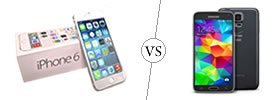Difference between HTC Butterfly and LG Optimus G
Key difference: The HTC Butterfly is a high-end phone by the HTC Corporation. The HTC Butterfly is sold in four variants: Droid DNA; J Butterfly HTL21; Butterfly X920d; and Butterfly X920e. They are all powered on a Quad-core 1.5 GHz Krait processor. The HTC Droid has the Quadcomm MDM615m, while the Butterfly variants have the Qualcomm APQ8064 chipset. They all have 2 GB of RAM. The LG Optimus G features a 4.7 inch screen and runs on Android 4.0 (Ice Cream Sandwich). In terms of hardware, it has a Qualcomm Snapdragon S4 Pro APQ8064, 1.5 GHz quad-core Qualcomm Krait with 2 GB RAM.
 The HTC Butterfly is a high-end phone by the HTC Corporation. The phone has been quite popular all over the world; however, most people don’t know exactly how popular the phone has actually been. This is mainly because not many people know that the HTC Butterfly and HTC Droid DNA is actually pretty much the same phone, with only a few differences. The differences are only there to make the phone more regional specific.
The HTC Butterfly is a high-end phone by the HTC Corporation. The phone has been quite popular all over the world; however, most people don’t know exactly how popular the phone has actually been. This is mainly because not many people know that the HTC Butterfly and HTC Droid DNA is actually pretty much the same phone, with only a few differences. The differences are only there to make the phone more regional specific.
The HTC Butterfly is sold in four variants: Droid DNA in the United States on the Verizob Network; J Butterfly HTL21 in Japan on KDDI's au network; Butterfly X920d in Taiwan, South East Asia and India; and Butterfly X920e in China and Russia.
All the variants have most of the same features. They are all powered on a Quad-core 1.5 GHz Krait processor. The HTC Droid has the Quadcomm MDM615m, while the Butterfly variants have the Qualcomm APQ8064 chipset. They all have 2 GB of RAM and Adreno 320 graphics processor. They all have an 8 MP primary camera and a 2.1 MP secondary front facing camera. The display is a 5 inch Super LCD3 capacitive touchscreen with Corning Gorilla Glass 2. At the time of the launch the phone was the second phone in the market to feature a 1080p display. The phone has Android version 4.1, but is upgradable to Android 4.2.
The HTC Droid DNA differs from the other variants, in that it supports wireless charging, but lacks a MicroSD slot. The Droid DNA and the J Butterfly both support CDMA and LTE connections, as well as UMTS. However, only the Droid DNA comes with quad band UMTS radio. The X920d and X920e, on the other hand, do not even have LTE support. There are also some subtle differences regarding color accents, buttons and logo placement. However, these are minor and so not affect the phones.
A popular series of smartphones by LG Electronics is the LG Optimus. Some of the newer phones under this brand include LG Optimus G, LG Optimus L5, LG Optimus L7, etc.
 The LG Optimus G features a 4.7 inch screen and runs on Android 4.0 (Ice Cream Sandwich). In terms of hardware, it has a Qualcomm Snapdragon S4 Pro APQ8064, 1.5 GHz quad-core Qualcomm Krait with 2 GB RAM. It has a 13 MP or an 8MP primary camera, which is dependent on the market. It has a 1.3 MP secondary front camera. It is available with a storage capacity of 32 GB. It will have 4G and NFC capabilities.
The LG Optimus G features a 4.7 inch screen and runs on Android 4.0 (Ice Cream Sandwich). In terms of hardware, it has a Qualcomm Snapdragon S4 Pro APQ8064, 1.5 GHz quad-core Qualcomm Krait with 2 GB RAM. It has a 13 MP or an 8MP primary camera, which is dependent on the market. It has a 1.3 MP secondary front camera. It is available with a storage capacity of 32 GB. It will have 4G and NFC capabilities.
The phone can be identified by the glittery backside which makes the phone appear trendy. However, the back panel is not removable, which may be a downside for some, as this means that the battery will not changeable. The phone has also been criticized for being a little on the heavier side.
The LG Optimus G features Smart Screen that keeps the screen on if the phone detects the user's eyes looking at it. It also allows users to choose the phone's default font and font size, change how long the capacitive keys backlight stays on, and customize the events that trigger the notification light to flash. The phone also features QSlide apps which include a web browser, Memo pad, Calendar, Calculator and a Video player. These allow the users to run two of these QSlide apps simultaneously with a slider allows user to focus on one of them.
The information for the detailed table about the two phones has been taken from the HTC website, the LG website, engadget.com and GSMarena.com.
|
|
HTC Butterfly (HTC Droid DNA) |
LG Optimus G |
|
Launch Date |
November 2012 |
November 2012 |
|
Company |
HTC |
LG Electronics |
|
Size |
143 x 70.5 x 9.1 mm (5.63 x 2.78 x 0.36 in) |
131.9 x 68.9 x 8.5 mm (5.19 x 2.71 x 0.33 in) |
|
Display |
Super LCD3 capacitive touchscreen, 16M colors |
True HD-IPS + LCD capacitive touchscreen, 16M colors |
|
Screen |
1080 x 1920 pixels, 5.0 inches (~441 ppi pixel density) |
768 x 1280 pixels, 4.7 inches (~318 ppi pixel density) |
|
Protection |
Corning Gorilla Glass 2 |
Corning Gorilla Glass |
|
Weight |
141.7 g (4.97 oz) |
145g (5.11 oz) |
|
2G Network |
GSM 850 / 900 / 1800 / 1900 or CDMA 800 / 1900 |
GSM 850 / 900 / 1800 / 1900 |
|
3G Network |
HSDPA 850 / 900 / 1900 / 2100 or CDMA2000 1xEV-DO |
HSDPA 900 / 2100 |
|
4G Network |
LTE 700 (market dependent) |
LTE Cat. 3 CSFB 700/1700 |
|
GUI |
HTC Sense UI 4+ |
LG Optimus UI v3.0 |
|
CPU speed |
Quad-core 1.5 GHz Krait |
Quad-core 1.5 GHz Krait |
|
GPU |
Adreno 320 |
Adreno 320 |
|
OS |
Android OS, v4.1 (Jelly Bean), planned upgrade to v4.2 (Jelly Bean) |
Android OS, v4.0.4 (Ice Cream Sandwich), upgradable to v4.1.2 (Jelly Bean) |
|
Chipset |
Qualcomm Snapdragon MDM615m or APQ8064 |
Qualcomm MDM9615/APQ8064 |
|
RAM |
2 GB RAM |
2 GB RAM |
|
SIM Size |
Micro-SIM |
Micro-SIM |
|
Internal Memory |
16 GB (11 GB user available) |
32 GB |
|
Expandable Memory |
microSD, up to 32 GB (Market dependent) |
None |
|
Sensors |
Accelerometer, gyro, proximity, compass |
Accelerometer, gyro, proximity, compass |
|
Connectivity |
3.5 mm stereo audio jack, NFC capable, Compliant with Bluetooth 4.0 BLE, Wi-Fi: 802.11 a//b/g/n, micro-USB 2.0 (5-pin) port |
Network, Bluetooth Version, Mobile Hotspot, Wi-Fi Connectivity, GPS, AT&T 4G LTE Network, 4.0+LE, Share a 4G data connection with other compatible wireless devices, 802.11b/g/n, S-GPS For Enhanced Location Accuracy |
|
Data |
GPRS, EDGE, WLAN, Bluetooth, USB, NFC (Market dependent). |
WiFi, NFC, GPRS, EDGE, LTE, USB |
|
Speed |
HSPA, EV-DO Rev. A, up to 3.1 Mbps; LTE, Cat3, 50 Mbps UL, 100 Mbps DL |
HSDPA, HSUPA, LTE |
|
WLAN |
Wi-Fi 802.11 a/b/g/n, Wi-Fi Direct, DLNA, Wi-Fi hotspot |
Wi-Fi 802.11 a/b/g/n, dual-band, Wi-Fi Direct, DLNA, Wi-Fi hotspot |
|
Bluetooth |
Yes, v4.0 with A2DP |
Bluetooth v4.0 with A2DP |
|
USB |
Yes, microUSB v2.0 (MHL) |
microUSB v2.0 (MHL), USB Host |
|
Primary Camera |
8 MP, 3264x2448 pixels, autofocus, LED flash |
13 MP/8 MP (market dependent), autofocus, LED flash (depending on the market) |
|
Secondary Camera |
2.1 MP, 1080p@30fps |
1.3 MP |
|
Video |
1080p@30fps, stereo sound rec., video stabilization |
1080p@30fps, LED video light |
|
Camera Features |
Simultaneous HD video and image recording, geo-tagging, face and smile detection, autofocus, LED flash |
Geo-tagging, face detection, image stabilization |
|
Sound Enhancement |
Built-in headset amplifier and dedicated amp for the external rear-speaker, Beats Audio |
Dolby mobile sound enhancement SNS applications Active noise cancellation with dedicated mic |
|
Audio supported formats |
MP3/eAAC+/WMA/WAV player |
MP3/WMA/WAV/FLAC/eAAC+/AC3 player |
|
Video supported formats |
DivX/XviD/MP4/H.263/H.264/WMV player |
MP4/H.264/H.263/WMV/DviX player |
|
Battery Capacity |
Non-removable Li-Ion 2020 mAh battery |
Non-removable Li-Po 2100 mAh battery |
|
Available Colors |
Black |
Black |
|
Messaging |
SMS (threaded view), MMS, Email, Push Email |
SMS(threaded view), MMS, Email, Push Mail, IM, RSS |
|
Browser |
HTML5 |
HTML5, Adobe Flash |
|
Radio |
- |
Stereo FM radio with RDS |
|
GPS |
Yes, with A-GPS support and GLONASS |
with A-GPS support and GLONASS |
|
Java |
Yes, via Java MIDP emulator |
Java MIDP emulator |
|
Additional Features |
|
|
Image Courtesy: htc.com, blogcdn.com









Add new comment